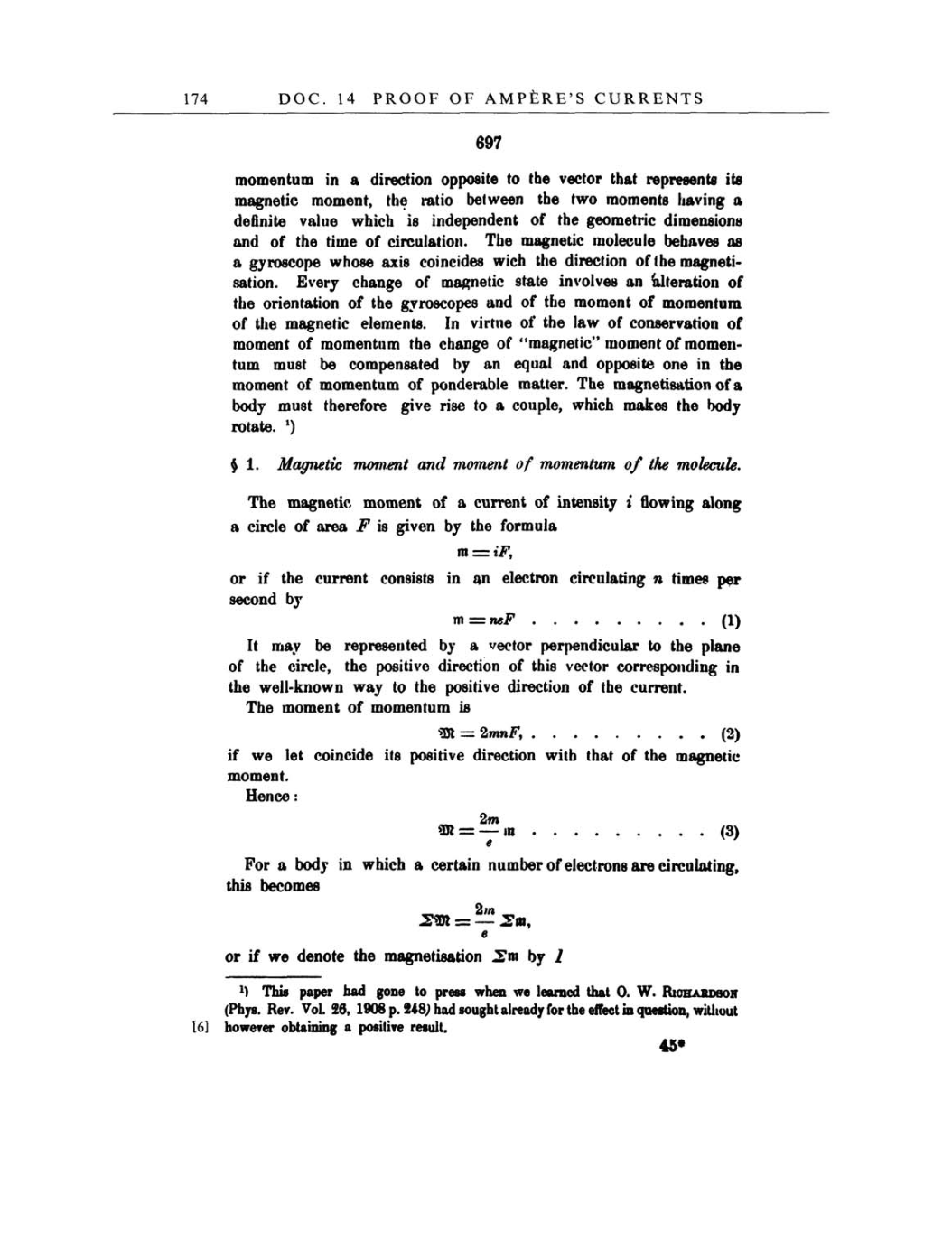174
DOC.
14
PROOF
OF
AMPERE'S
CURRENTS
697
momentum in
a
direction
opposite
to
the
vector
that
represents
its
magnetic moment,
the
ratio
between
the
two moments
having
a
definite
value
which is
independent
of
the
geometric
dimensions
and
of
the time
of circulation.
The
magnetic
molecule behaves
as
a
gyroscope
whose axis coincides
wich
the direction of
the
magneti-
sation.
Every change
of
magnetic
state
involves
an
alteration of
the orientation of the
gyroscopes
and of the
moment
of
momentum
of the
magnetic elements. In
virtue of the law of
conservation of
moment
of
momentum
the
change
of
"magnetic"
moment of
momen-
tum must be
compensated by an
equal
and
opposite
one
in
the
moment
of
momentum
of
ponderable
matter.
The
magnetisation
of
a
body
must
therefore
give
rise to
a couple,
which
makes the
body
rotate.
1)
$
1.
Magnetic
moment
and
moment
of
momentum of the
molecule.
The
magnetic
moment of
a
current of
intensity
i
flowing
along
a
circle
of
area
F
is
given
by
the
formula
m
=
iF,
or
if the current
consists in
an
electron
circulating
n
times
per
second
by
m
=
neF
(1)
It
may
be
represented
by
a
vector
perpendicular
to the
plane
of
the
circle,
the
positive
direction of
this vector
corresponding
in
the
well-known
way
to
the
positive
direction of
the current.
The
moment
of
momentum is
*531
=
2mnF,
(2)
if
we
let
coincide its
positive
direction
with that of the
magnetic
moment.
Hence:
2m
=
-
(3)
e
For
a body
in which
a
certain number of
electrons
are circulating,
this
becomes
__
2/n
=
-
.Tm,_
e
or
if
we
denote
the
magnetisation
2m
by
1
1)
This
paper
had
gone
to
press
when
we
learned
that
O.
W. Richardson
(Phys.
Rev. Vol. 26,
1908
p.
248)
had
sought already
for
the
effect
in
question,
without
[6]
however
obtaining a positive
result.
45*
